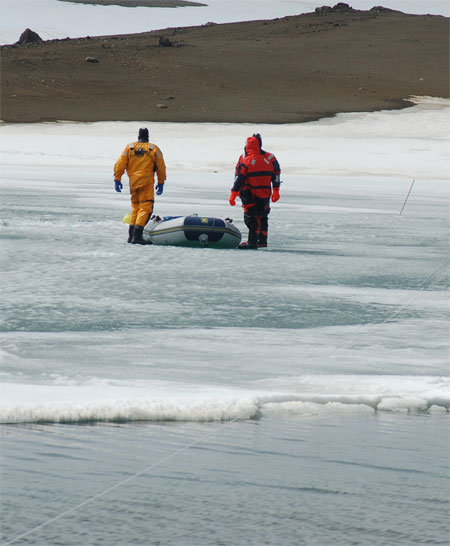
© Science/AAASResearchers collected water samples from Antarctica's Limnopolar Lake to figure out the diversity of viruses.
Antarctica's icy lakes are home to a surprisingly diverse community of viruses, including some that were previously unidentified, a new study finds.
At first glance, Antarctica's freshwater lakes don't seem very hospitable to life. They remain frozen for a good nine months out of the year, and they contain very few nutrients. Some of these lakes have little animal life and are dominated by microorganisms, including algae, bacteria, protozoans and viruses.
With few animal and microbial predators around, viruses likely play an important role in controlling the abundance of other microorganisms, the researcher say. However, these viruses have been historically hard to study since many cannot be grown in a laboratory. But thanks to new genome sequencing technology, scientists can identify viruses without needing to grow them.
"We are just starting to uncover the world of viruses, and this is changing the way we think about viruses and the role they play in microbial ecosystems," said Antonio Alcami, a researcher from the Spanish Research Council.



